Two sheets of thickness d and 3d, are touching each other. The temperature just outside the thinner sheet is T1 and on the side of the thicker sheet is T3. The interface temperature is T2.T1,T2andT3 are in arithmetic progression. The ratio of thermal conductivity of thinner sheet to thicker sheet is .
1:3
3:1
2:3
3:9
The correct Answer is:A
To solve the problem, we need to find the ratio of the thermal conductivity of the thinner sheet (thickness d) to the thicker sheet (thickness 3d) given that the temperatures T1, T2, and T3 are in arithmetic progression.
1. Understanding the Setup:
- We have two sheets:
- Thinner sheet with thickness d and thermal conductivity k1.
- Thicker sheet with thickness 3d and thermal conductivity k2.
- The temperatures are given as follows:
- Temperature just outside the thinner sheet: T1
- Interface temperature: T2
- Temperature just outside the thicker sheet: T3
- It is given that T1, T2, and T3 are in arithmetic progression.
2. Using the Concept of Heat Current:
- The heat current IH through both sheets must be equal since they are in contact:
IH=T2−T1RH1=T3−T2RH2
- Where RH1 and RH2 are the thermal resistances of the thinner and thicker sheets, respectively.
3. Calculating Thermal Resistance:
- The thermal resistance RH is given by:
RH=ΔxkA
- For the thinner sheet:
RH1=dk1A
- For the thicker sheet:
RH2=3dk2A
4. Setting Up the Equation:
- Substitute the resistances into the heat current equation:
T2−T1dk1A=T3−T23dk2A
- Simplifying this gives:
(T2−T1)⋅k1d=(T3−T2)⋅k23d
- Canceling d and A from both sides, we have:
k1(T2−T1)=k23(T3−T2)
5. Expressing the Temperatures:
- Since T1, T2, and T3 are in arithmetic progression, we can express:
T2=T1+T32
- Therefore, we can find:
T3−T2=T3−T1+T32=T3−T12
T2−T1=T1+T32−T1=T3−T12
6. Substituting Back:
- Substitute these into the equation:
k1⋅T3−T12=k23⋅T3−T12
- Canceling T3−T12 (assuming T3≠T1):
k1=k23
7. Finding the Ratio:
- Rearranging gives:
k1k2=13
Final Answer:
The ratio of the thermal conductivity of the thinner sheet to the thicker sheet is:
k1k2=13
- We have two sheets:
- Thinner sheet with thickness d and thermal conductivity k1.
- Thicker sheet with thickness 3d and thermal conductivity k2.
- The temperatures are given as follows:
- Temperature just outside the thinner sheet: T1
- Interface temperature: T2
- Temperature just outside the thicker sheet: T3
- It is given that T1, T2, and T3 are in arithmetic progression.
- The heat current IH through both sheets must be equal since they are in contact:
IH=T2−T1RH1=T3−T2RH2
- Where RH1 and RH2 are the thermal resistances of the thinner and thicker sheets, respectively.
- The thermal resistance RH is given by:
RH=ΔxkA
- For the thinner sheet:
RH1=dk1A
- For the thicker sheet:
RH2=3dk2A
- Substitute the resistances into the heat current equation:
T2−T1dk1A=T3−T23dk2A
- Simplifying this gives:
(T2−T1)⋅k1d=(T3−T2)⋅k23d
- Canceling d and A from both sides, we have:
k1(T2−T1)=k23(T3−T2)
- Since T1, T2, and T3 are in arithmetic progression, we can express:
T2=T1+T32
- Therefore, we can find:
T3−T2=T3−T1+T32=T3−T12
T2−T1=T1+T32−T1=T3−T12
- Substitute these into the equation:
k1⋅T3−T12=k23⋅T3−T12
- Canceling T3−T12 (assuming T3≠T1):
k1=k23
- Rearranging gives:
k1k2=13
The ratio of the thermal conductivity of the thinner sheet to the thicker sheet is:
k1k2=13
Topper's Solved these Questions
- PROPERTIES OF MATTERBook:VMC MODULES ENGLISHChapter:PROPERTIES OF MATTERExercise:Level -2
Explore 50 Videos
- PROPERTIES OF MATTERBook:VMC MODULES ENGLISHChapter:PROPERTIES OF MATTERExercise:JEE Main (Archive) Level - 1
Explore 48 Videos
- PROPERTIES OF MATTERBook:VMC MODULES ENGLISHChapter:PROPERTIES OF MATTERExercise:JEE Advanced (Archive) Level - 2 (MATRIX MATCH TYPE)
Explore 1 Video
- MOVING CHARGES & MAGNETISM Book:VMC MODULES ENGLISHChapter:MOVING CHARGES & MAGNETISM Exercise:IN-CHAPTER EXERCISE-K
Explore 10 Videos
- QUIZBook:VMC MODULES ENGLISHChapter:QUIZExercise:PHYSICS
Explore 30 Videos
Similar Questions
Two sheets of thickness d and 2d and same area are touching each other on their face. Temperature TA,TB,TC shown are in geometric progression with common ratio r = 2. Then ratio of thermal conductivity of thinner and thicker sheet are
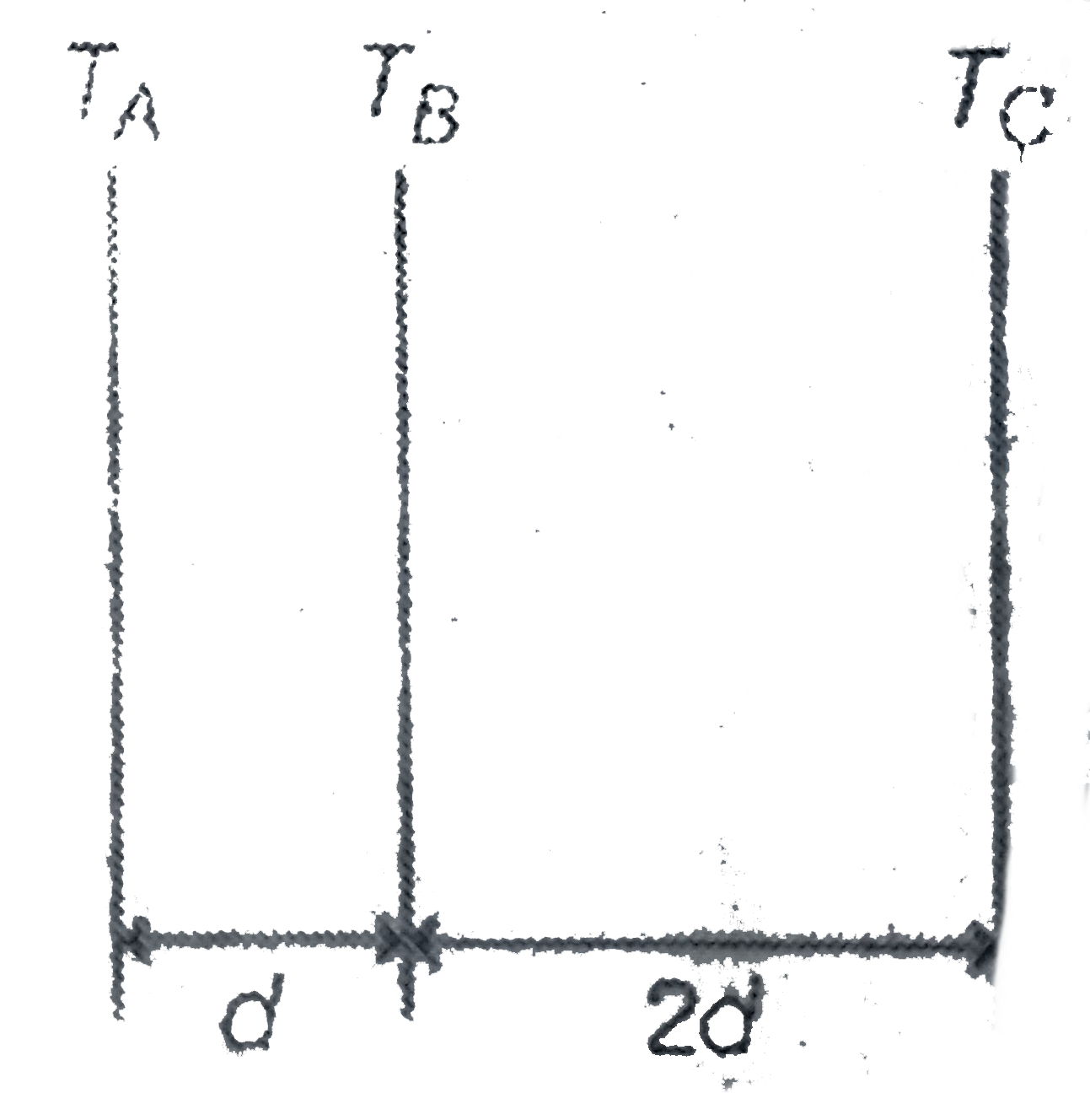
View SolutionThe plots of intensity versus wavelength for three black bodies at temperature T1,T2andT3 respectively are as shown. Their temperatures are such that
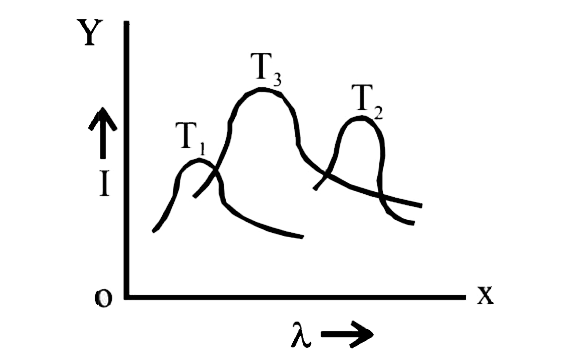
View Solution
Knowledge Check
The isothermal diagram of a gas at three different temperatures T1,T2andT3, is show in the given figure .Then
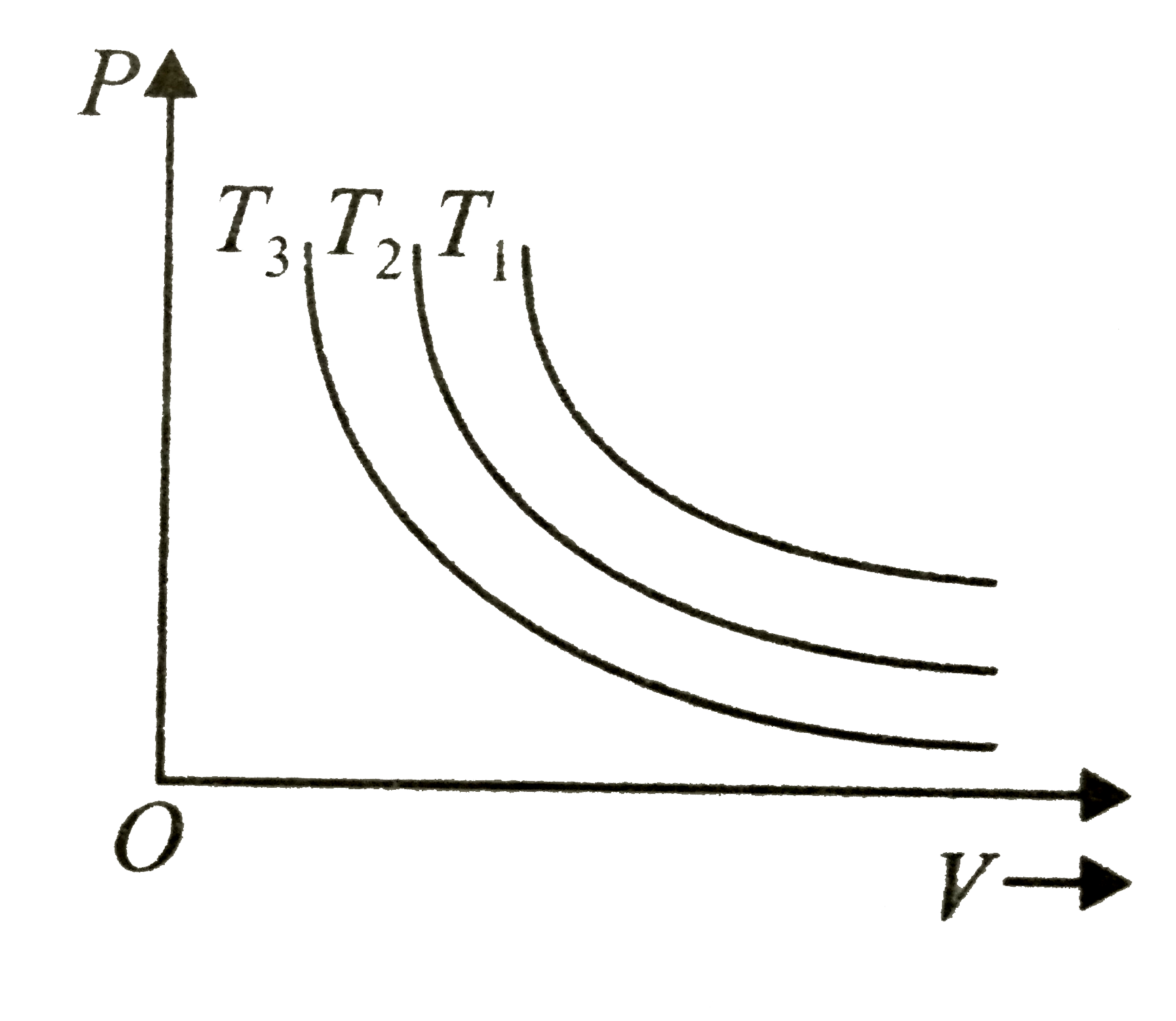 Aa.T1<T2<TBb. T1<T2>T3Cc.T1>T2>T3Dd.T1>T2<T3
Aa.T1<T2<TBb. T1<T2>T3Cc.T1>T2>T3Dd.T1>T2<T3
Find the indicated terms in each of the following arithmetic progression a=3,d=2,tn,t10
View Solution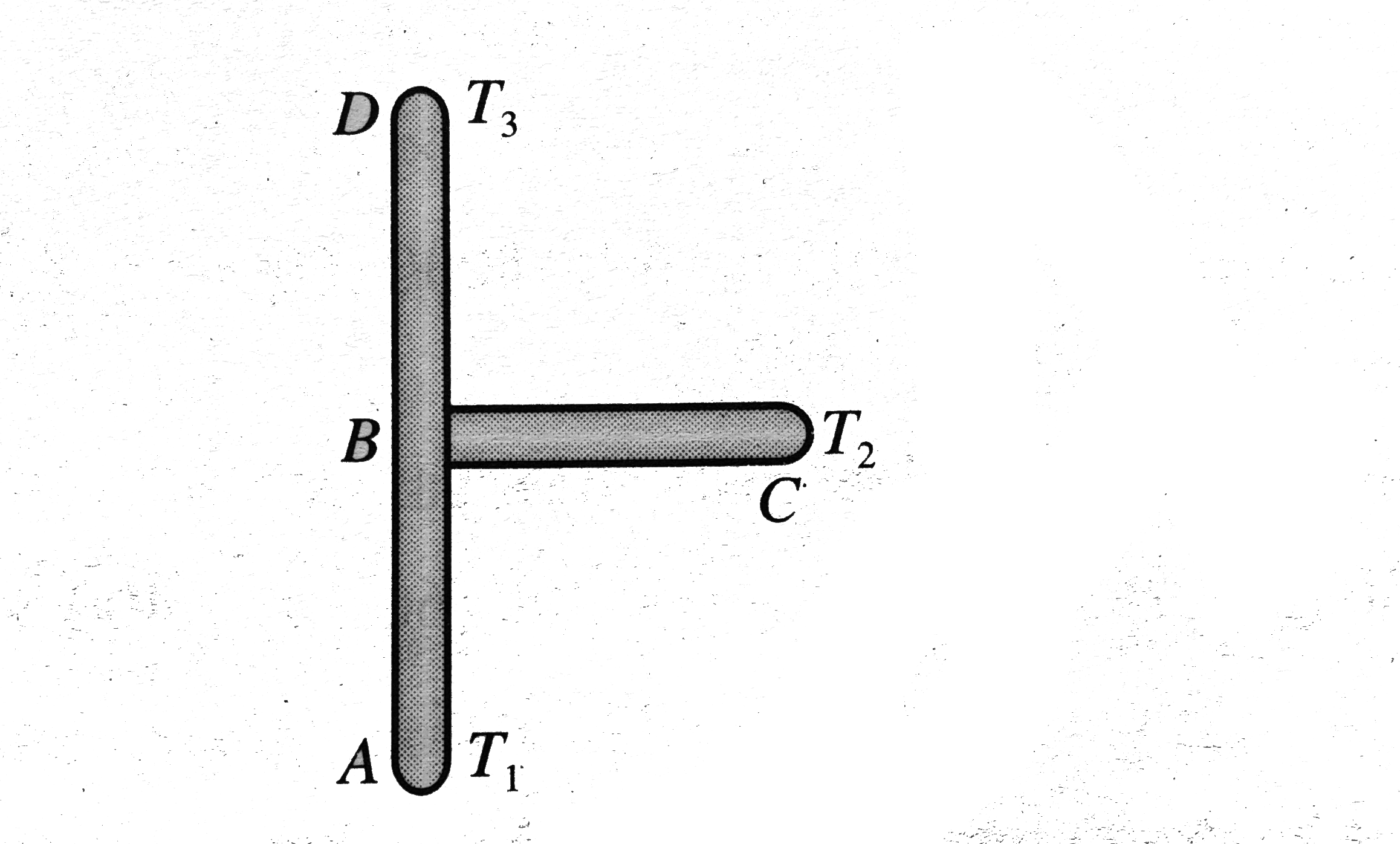
Three rods AB, BC and BD having thermal conductivities in the ratio 1:2:3 and lengths in the ratio 2:1:1 are joined as shown in Fig. The ends A, C and D are at temperature T1,T2 and T3 respectively Find the temperature of the junction B. Assume steady state.
View SolutionTwo bodies of different temperatures T1andT2 if brought in thermal contact, do not necessarily settle to the mean temperature (T1+T2)/2. Why?
View SolutionConsider the two insulating sheets with thermal resistance R1 and R2 as shown in figure. The temperature θ is
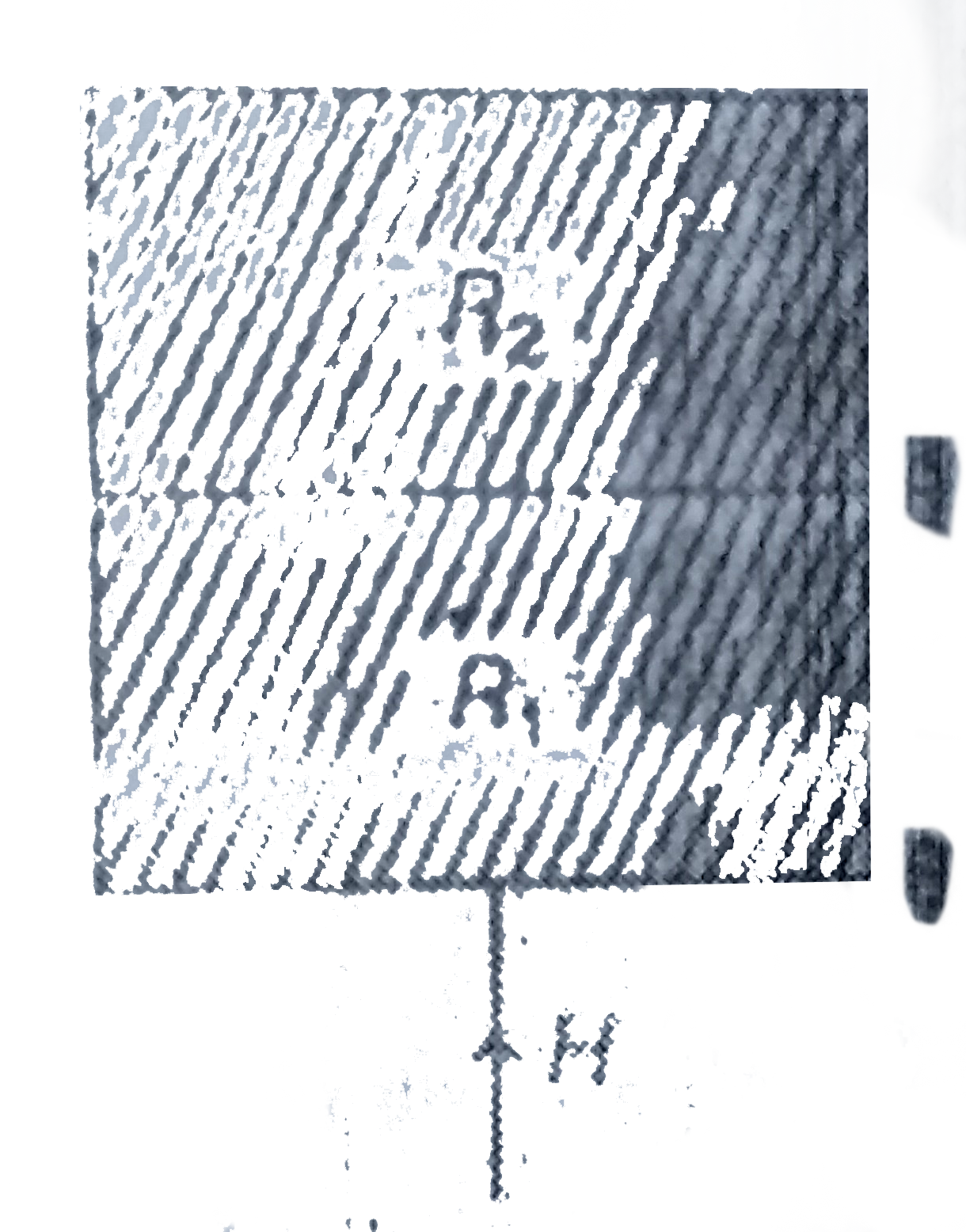
View SolutionThe current - voltage graphs for a given metallic wire at two different temperatures T1andT2 are shown in the figure.
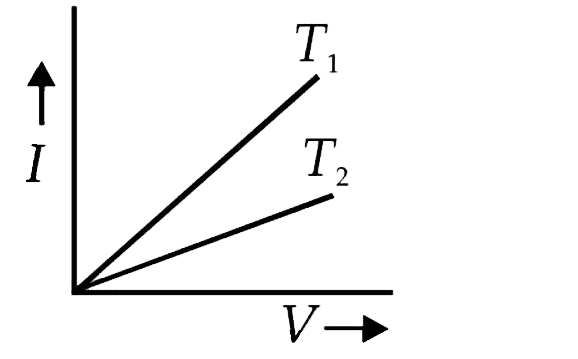
The temperature T2 is greater than T1.
View SolutionThe current - voltage graphs for a given metallic wire at two different temperatures T1andT2 are shown in the figure.

The temperature T2 is greater than T1.
View SolutionA clear sheet of polaroid is placed on the top of similar sheet so that their axes make an angle sin−1(35) with each other. The ratio of intensity of the emergent light to that of unpolarised incident light is
View Solution